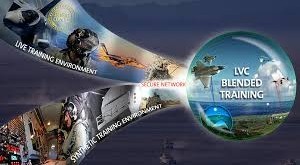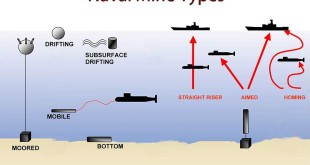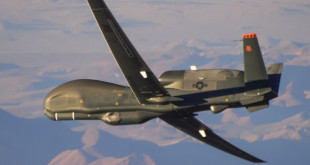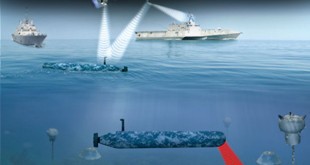According to a 23 January DARPA solicitation, the cost, complexity, and limited availability of military ranges mean that operational training and system test and evaluation will increasingly take place in completely virtual environments. Furthermore, the increasing adoption of artificial intelligence (AI) will require orders of magnitude of more test and …
Read More »Yearly Archives: 2019
Rising threat of Mine Warfare with development of stealthy, smart, maneuverable and networked sea mines
Traditional navies as well as maritime terrorists can and have used mines and underwater improvised explosive devices (UWIEDs) to challenge military and commercial uses of the seas. Mines have been utilized in defensive capabilities, such as denying access into a region, and offensive capacities, such as denying egress out of …
Read More »With rising threat of mobile malware, Mobile companies are launching secure smartphones
The recent rise in mobile malware have made Mobile phones vulnerable to data leakage and tempering of sensitive information such as business documents, bank details, credit card information and make purchases. Malware client called Pegasus have been found that can jailbreak your smartphone, ultimately installing a client that can seize data, …
Read More »Rectenna or rectifying antenna critical technology for wireless power systems, powering military drones, and receiving solar power from satellites
Over the past two decades, many wireless systems have been developed and widely used around the world. The most important examples are cellular mobile radio and Wi-Fi systems. Just like radio and television broadcasting systems, they radiate electromagnetic waves/energy into the air but a large amount of the energy is …
Read More »Silicones enhance the reliability of the Electronics, Aerospace and Military systems
Since the 1980’s, the electronics industry has undergone explosive growth, as higher transistor densities have fueled substantial performance advances while paving the way for miniaturization. In order for these systems to function properly, the electronic circuits within them must be protected from extreme temperatures, contaminants, shock and vibration, and harsh …
Read More »A new 2-D material Molybdenum Disulfide Outperforms Graphene in electronics, photonics and Water Desalination
Many alternatives to silicon are being developed, as it is believed that silicon transistors will reach their technological limits after 2020. Two-dimensional (2-D) nanomaterials have shown promise for a new generation of nanoelectronic devices. The most widely studied 2-D nanomaterial is graphene, a single layer of carbon atoms and packed …
Read More »Reaper and Global Hawks being modernized to defeat A2 / AD environment through long range high-resolution sensors and cybersecurity
Current unmanned aircraft – including the MQ-1 Predator, MQ-9 Reaper and RQ-4 Global Hawk have excelled against terrorists, both for near-persistent intelligence, surveillance and reconnaissance and strike capability for Reapers and Predators. This was partly due to the permissive environments of southwest Asia counter terrorism missions against technologically inferior groups. In …
Read More »Threat of terrorism to transportation requires new strategy and appropriate technologies
The threat of terrorism is not new to transportation. From jet airliners to mass transit buses and rail terminals, vehicles and transport facilities are all-too-familiar targets of terrorist attacks. The 1995 sarin gas attack on the Tokyo subway left 13 people dead and injured 6,000 others. The terror attack was …
Read More »Ultrasound sensors becoming cheap, miniaturized and ultrasensitive leading to wide employment in automotive, healthcare, industrial, and electronics.
As the name indicates, ultrasonic sensors measure distance by using ultrasonic waves. The basic working principle of these sensors is based on echolocation, which involves transmission of ultrasonic waves to the target object, which reflects it back to the source after receiving the initial wave. The ultrasonic sensors detect the exact …
Read More »DARPA Angler project seeking autonomous deep-diving unmanned underwater vehicle (UUV) for surveying and combat missions
Deep sea reach is important to Navies which can collect the information about enemy submarines as well as carry out their own operations undetected. China continues to make progress in deep sea exploration following the three-month mission of a new underwater glider in the South China Sea, which experts said …
Read More » International Defense Security & Technology Your trusted Source for News, Research and Analysis
International Defense Security & Technology Your trusted Source for News, Research and Analysis








